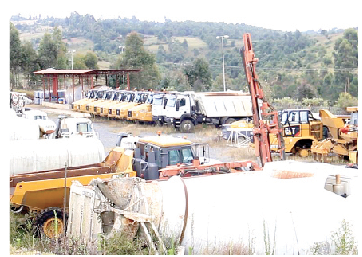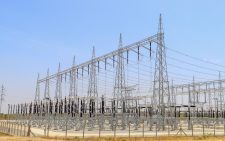Stalled projects worsening budget deficit, experts say

Accelerated efforts to make Kenya an industrialised middle-income economy have left the country with hundreds of infrastructure projects which have become an uphill task to complete despite gobbling billions of shillings.
Audit firm, PKF Consulting says the revelation that development projects worth over Sh9 trillion remain stalled among them roads, office blocks, dams and irrigation projects, schools, and hospitals, is denying the country the benefits envisioned by these projects.
“In addition, the delayed payments to contractors have adversely affected businesses and led to financial pressure on the private sector. There is a need for the government to budget on settling such debts,” managing director Gurmit Santokh said in a pre-budget briefing.
“The matter has been addressed in the past but it is now spinning out of control with an amount due that exceeds the entire budgeted revenue,” he added.
Policy guidelines
PKF has linked devolution, lack of policy guidelines, and appetite for new mega infrastructures as the reasons behind the ballooning number of stalled projects which continues to draw the country into debt trap. Since 2013, the government initiated various debt-funded infrastructure plans which commenced prudently but gradually spiralled to a reckless borrowing spree as the state approached the Sh9 trillion debt ceiling.
Most of these projects have been funded through Private-Public Partnerships (PPP) involving international companies.
The Sh320 billion Standard Gauge Railway (SGR), Sh87 billion Nairobi Expressway, and Sh40 billion Kipevu oil Terminal have all been contracted to China Road and Bridge Corporation (CRBC) through PPP. The Kenya Public Expenditure Review released 2021 by the World Bank, showed that Kenya had a stock of 3972 ongoing projects many of which are significantly delayed, incomplete or stalled.
“This has resulted in a subsequent squeeze on ongoing projects in the absence of fiscal space, which is now accruing large costs to the government arising from the accumulation of pending bills,” the World Bank noted.
It is estimated that at least Sh1.12 trillion (11 per cent of GDP) in expenditure is required to fund all stalled projects to completion. Terminating the contracts can help the government save billions of shillings but this will equally put the government into legal compensation.
The Bretton Woods institution said that 522 completely dormant projects worth Sh1 trillion ($10 billion) should be considered for cancellation to save billions.
Shockingly, the government continues to initiate new projects even before completing the ongoing ones that are accumulating debt following budget cuts and are on the brink of joining the long list of stalled portfolios.
At the end of last year, the gross public debt was high at sh8.2 trillion from Sh7.2 trillion by the end of 2020, which is more than two-thirds of the annual gross domestic product (GDP). About half of the debt was external while domestic accounted for the other half.
Pending bills
The Controller of Budget recently raised a red flag over the huge pending bills amounting to 467.7 billion, which partly included State Corporation bills to contractors or projects. Making the list of defaulters is the State Department of Transport with a Sh6.1 billion pending bill. According to the African Development Bank Policy Note on public debt dynamics in Kenya for December 2021, Kenya was already on a high public debt trajectory before Covid-19.
The International Monetary Fund (IMF) recently proposed the cancellation of stalled projects in a new raft of conditions set to shape Kenya’s fiscal policies, a move that has seemingly dejected the government.












